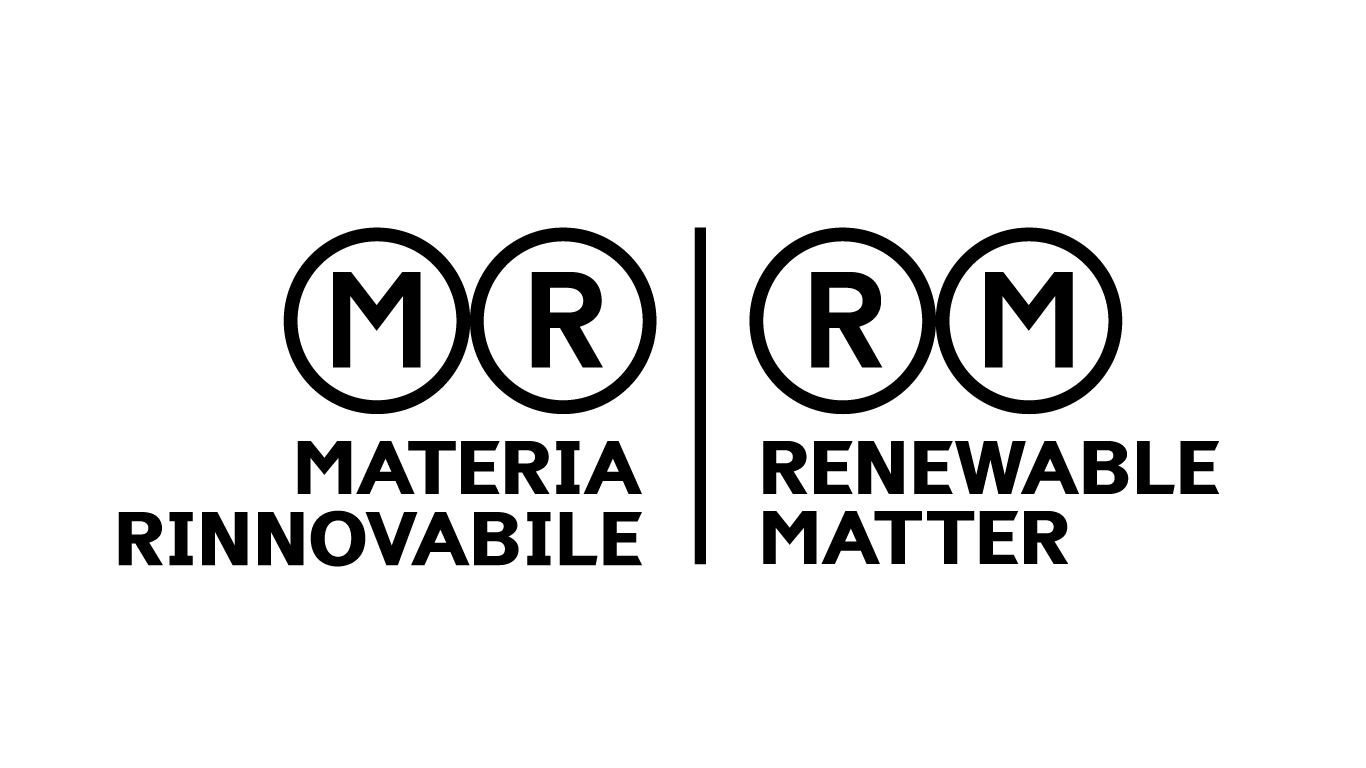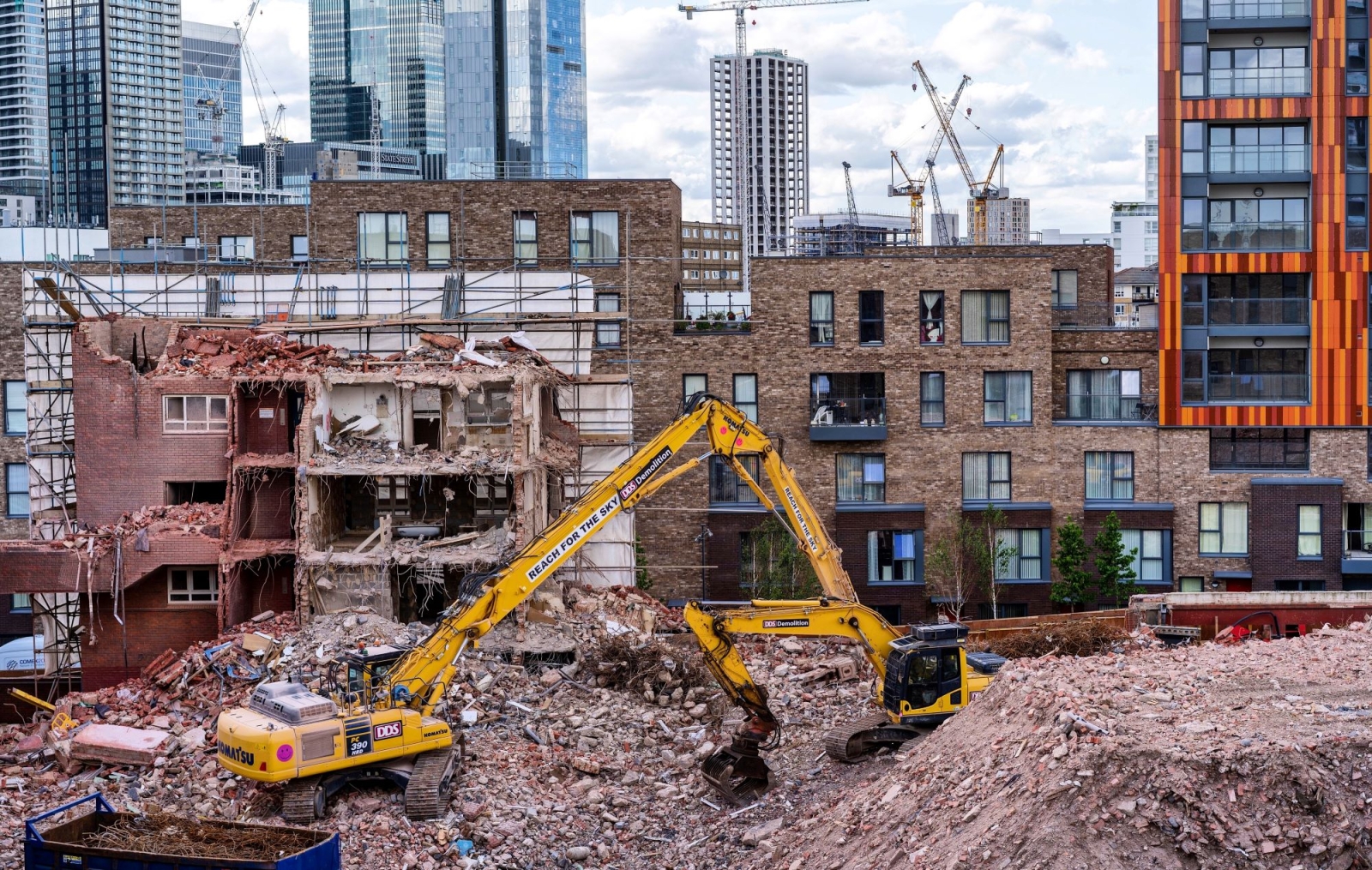A video gone viral in the summer of 2021 showed the simultaneous demolition of 15 new and never-lived-in skyscrapers in the southern Chinese city of Kunming in just 45 seconds. Certainly, the frenzied pace of building, and demolition, in China's construction industry has contributed recently, in addition to the bursting of the real estate bubble in the People's Republic, to lowering the average lifespan of buildings around the world.
While it is true that, especially in Europe, there are century-old buildings still in use today, what is being built today has a much shorter life expectancy, sometimes – especially for commercial buildings – expiring in little more than a decade. And relatively little of what is demolished is then actually recovered, reused or recycled, even though the construction sector has the highest rate of virgin resource consumption in the world. In fact, it is estimated that construction globally uses about one-third of all raw materials extracted annually, while in Europe alone – according to the Circular Building Coalition's new report – the sector now consumes 1094 million tons of materials annually, generating 124 million tons of demolition waste.
In short, a colossal problem of both economic and environmental sustainability that the introduction of extended producer responsibility systems, accompanied by radical circular practices, could curb.
What is the product? Who is responsible for it?
Given the resource-intensive nature of construction, one might think that the sector was one of the first to be considered for the introduction of EPR schemes. In reality, it is among those furthest behind in this journey: the complexity of the supply chains and the products of this industry – the buildings themselves – has made a straightforward, linear approach to producer responsibility impossible. In practice, industry actors and experts are still debating two basic and indispensable questions to bring any EPR scheme to life: what is the product and who is responsible for it.
Ph Micah Williams (Unsplash)
“The definition of a product in construction depends on who is providing it: a contractor or supplier will think about components and materials, an architect or designer about the whole building,” Samy Kazemi, a built environment expert for the think-tank Circle Economy and among the authors of the aforementioned Circular Building Coalition report, explains to Renewable Matter. A paper by the UK's Construction Products Association (CPA) compares the construction industry to the automotive industry: size aside, both outputs are relatively durable, complex products composed of several components, some fixed and others more subject to wear and replacement.
The big difference, however, according to the paper's authors, lies in the respective supply chains of the two sectors: integrated and with only a few players in automotive, incredibly long and heterogeneous in the construction industry. It is the latter aspect, ultimately, that makes it difficult to determine who gets the role of “producer” in a possible EPR system for construction. According to Kazemi, the most pragmatic solution would be to hold construction and demolition companies responsible. “This is the easiest way,” she explains, “A component manufacturer generally does not have the proper logistics chain to dispose of and recycle demolition waste and is not on-site, while construction companies have the means and resources to do this more efficiently. “This is certainly true regarding buildings that have already been constructed,” retorts Carolina Montano Owen of the World Green Building Council. “However, it is a different matter if we think about new projects: in this case holding component manufacturers responsible could give a boost to ecodesign, because it would become their primary interest to design for disassembly and reuse.”
The French example
The debate, in short, is far from over. But while experts and the European Commission itself have not yet established a line for the introduction of extended producer responsibility in construction, there are those who are forging ahead. France, again, has decided to lead the way, establishing with the Circular Economy Act of 2020 (Loi anti-gaspillage pour une économie circulaire) the obligation to set up an EPR scheme for actors in the industry.
The obligation, which was triggered on January 1, 2023, first required the definition of a precise list of affected products, which Ademe, the French ecological transition agency, divided into the two macro-categories of inert waste (concrete, bricks, glass) and non-inert non-hazardous waste (metal, wood, plastics and PVC, plaster, coatings, and others). Components and materials have thus been designated as the “products” of the EPR scheme, a choice that “seems quite natural, since ecodesign starts with the product itself,” comments for Renewable Matter the communications office of Valobat, one of the four eco-organizations authorized to act as the PRO (Product Responsibility Organization) for the construction sector in France.
Formed in 2021 at the initiative of 26 construction producers and distributors, Valobat currently counts more than 4,000 member companies and is the only one of the four organizations to deal with the full range of construction and demolition waste defined by French law. As with other supply chains, producers and distributors pay (as of May 2023) an eco-contribution to the organization, which is responsible for planning the network of collection, treatment, and eventual recycling of materials. “On the collection front,” Valobat representatives explain, “voluntary eco-points are and will continue being deployed in the territory to receive waste from small construction sites and direct collection is planned at construction sites that generate a significant amount of material. The waste will then be treated to be reincorporated into industrial processes as raw material for recycling. We have identified and entered into contracts with recycling players throughout the territory, favoring closed loops wherever possible, and for each product family, tenders have been issued to supply the French and European industry with raw materials.” Finally, looking at what is the main node for implementing a truly effective EPR system, namely the uptake of recycled materials by industry, Valobat plans to implement “an ambitious action plan to support the acceleration of reuse and second life of products.”
Ph Mika Baumeister (Unsplash)
Barriers and shortcomings
However, the effective reuse of all that is recovered has several logistical and structural barriers. First, there is a lack of transparency about information regarding materials. The European Union, despite now having some control over where its building materials come from (according to the Circular Building Coalition's report, it imports 1 to 10 percent of them from non-EU countries), still has tracking problems that, comments Samy Kazemi, “hopefully should be solved with the introduction of digital product passports.”
Certifications of conformity for secondary raw materials are also a hot-button issue. “Manufacturers and builders have a hard time certifying recycled materials or components for reuse, because quality testing is very expensive,” explains Carolina Montano Owen, “So most of the time they give up and choose traditional, cheaper materials. This is a problem that should be addressed in legislation, for example with the revision, now under way, of the European Construction Products Regulation. But it is also an ecodesign issue: we need to start simplifying, use fewer composite materials, and above all, provide information on the substances contained in products to facilitate recycling.”
Finally, there is the nontrivial issue of logistics. “Transporting recovered materials can have high economic costs and also generate countless emissions,” Kazemi points out. The solution, she suggests, would be to “reuse materials on site, or, even better, to adopt adaptive reuse approaches, that is, to repurpose buildings for new uses, without the need to demolish them.”
New strategies
The world of construction and real estate is now experiencing a time of great change and evolution: new design techniques and new ownership models will inevitably influence material and waste management strategies as well.
For example, the product-as-a-service is now emerging in the construction industry in various forms, such as that of façades-as-a-service: a customizable and demountable façade with ventilation, light regulation and energy production systems. “These are business models that improve the circularity of buildings and are perfectly in line with the principles of EPR, since they facilitate the recovery of components by manufacturers, who retain ownership and value,” Kazemi explains.
Modularity is also the cornerstone principle of off-site construction, which, according to the CPA paper, “brings about a profound change in the way materials are managed at the beginning of a building's life and opens up the prospect of a very different way of managing their end of life.” At the time of disassembly, in theory, materials can, in fact, be returned directly to the factory, reducing timelines and shortening the supply chain.
Finally, a tool that has now become essential for architects and designers, BIM (Building Information Modelling), will help with its databases when it comes to finding information on components and materials, complementing the functions of the digital passport.
For a true circular building revolution, any extended producer responsibility system will still need to be accompanied by a paradigm and mindset shift. “Until a few years ago, it was cheaper for builders to demolish and rebuild from scratch than to adapt and renovate,” comments Kazemi, “But today, after the pandemic, raw material prices have risen, and in addition, investors now cannot disregard the carbon footprint of projects. Priorities are changing, and the real challenge will be to keep in use not only the materials but the buildings themselves as much as possible.”
Download and read issue #46 of Renewable Matter on Extended Producer Responsibility
Image: Rumman Amin (Unsplash)



